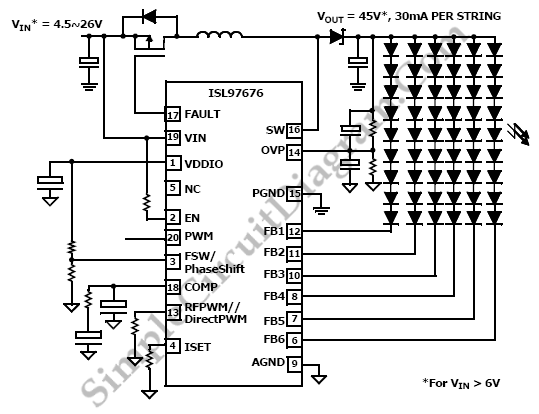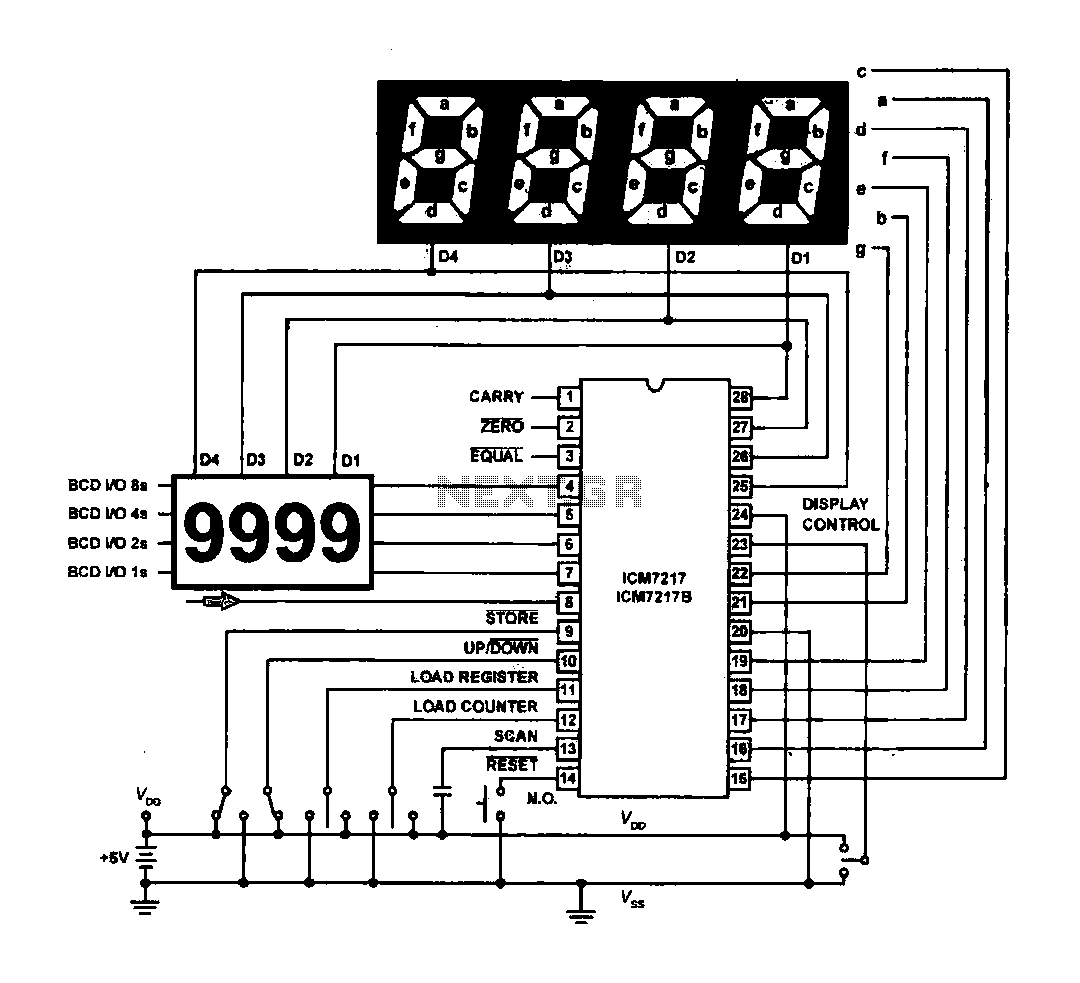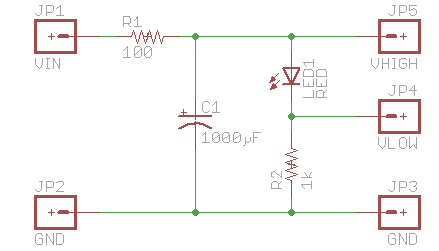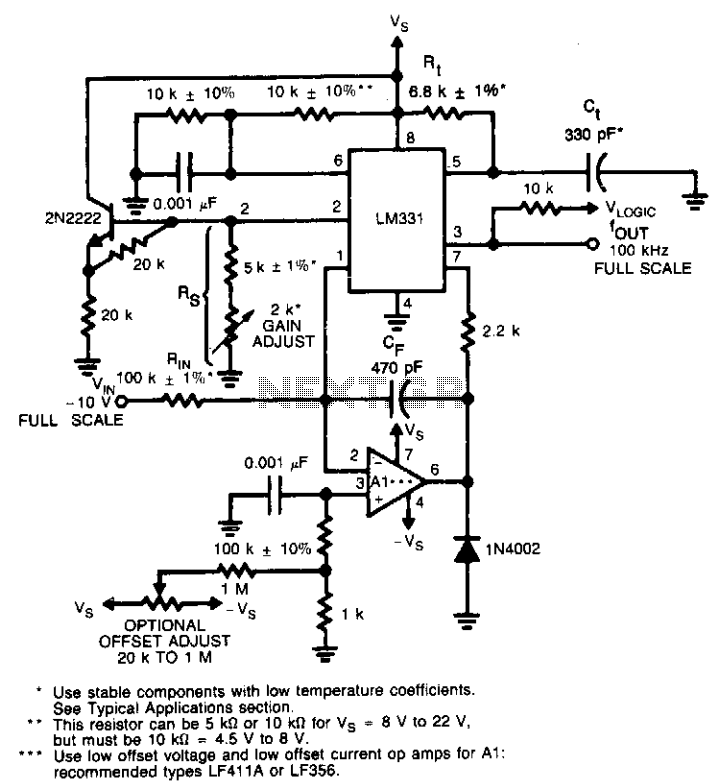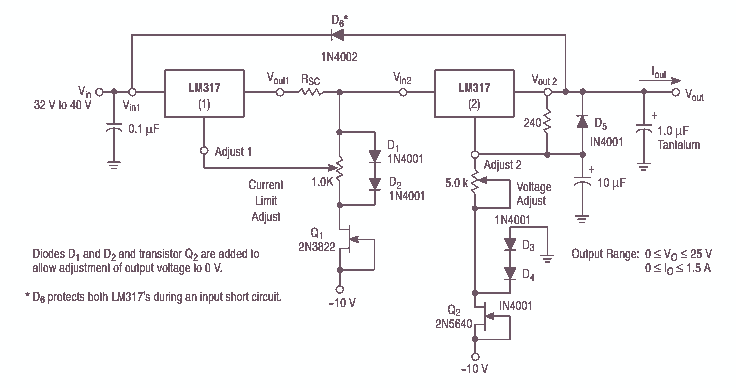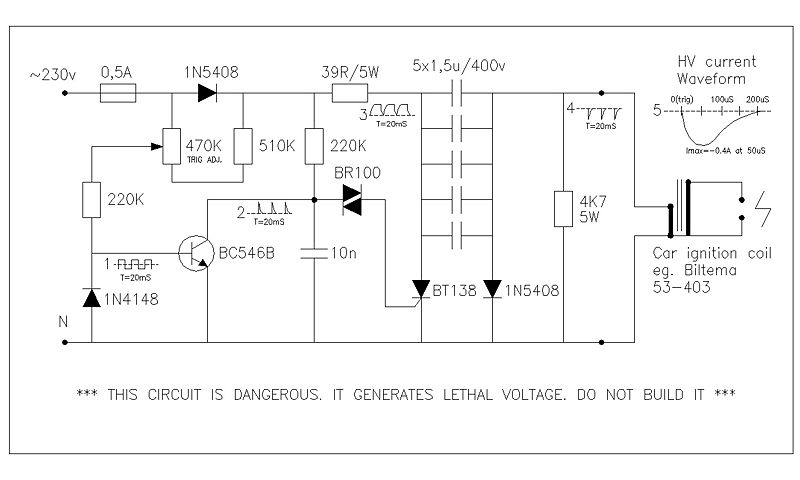
led How do I amplify a dc voltage that is too weak to trigger the base in a transistor
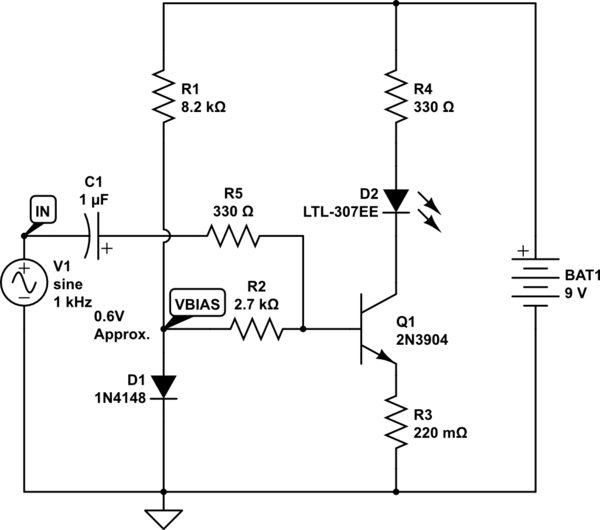
The goal is to take the voltage output from a 3.5mm audio jack and use it to light up an LED based on the audio voltage levels. The left audio channel will be connected to the base of a 2222N transistor, which will serve as an amplifier to activate the LED. However, the voltage measured from the audio wire is approximately 0.2V to 0.02V, which is insufficient to trigger the transistor. The inquiry is whether there is a method to increase the voltage to properly activate the transistor, or if a transformer or operational amplifier (op-amp) would be necessary.
The circuit design involves utilizing a 2222N NPN transistor, which can amplify low-level signals. The audio signal from the 3.5mm jack is typically a small AC voltage, which may not be adequate to turn on the transistor directly due to its base-emitter voltage threshold, usually around 0.7V. To address this, several solutions can be implemented.
One approach is to employ a simple op-amp circuit configured as a non-inverting amplifier. By connecting the audio signal to the non-inverting input of the op-amp and adjusting the gain through feedback resistors, the output can be increased to a level sufficient to drive the base of the 2222N transistor. The op-amp's power supply should be chosen based on the desired output swing, typically a dual supply of ±5V or ±12V would be appropriate for most applications.
Alternatively, a transformer can be used to step up the voltage. A small audio transformer can be connected to the audio jack output, with the primary winding connected to the audio signal and the secondary winding providing a higher AC voltage. This increased voltage can then be rectified and filtered to provide a DC voltage that can drive the base of the transistor.
In both cases, it is crucial to ensure that the transistor is adequately biased to operate in the active region. A resistor should be placed between the base of the transistor and the output of the op-amp or transformer to limit the base current. The LED can be connected in series with a current-limiting resistor to the collector of the transistor, allowing it to light up when the transistor is activated.
In summary, to successfully light the LED using the audio signal from a 3.5mm jack, an op-amp or transformer can be utilized to boost the voltage sufficiently to trigger the 2222N transistor, enabling the LED to respond to the audio signal effectively.Take the voltage output from a 3. 5mm audio jack and have it light up an LED according to it`s voltage. I was going to attach the left audio cable to the base of a 2222n transistor which would act as my amplifier to trigger the LED to light. Unfortunately, the voltage reading off the wire is like. 2 or. 02 and isn`t high enough to tri gger the flow. Is there any way to increase the voltage to trigger the transistor or would I have to use a transformer of some sort (or an op amp ) 🔗 External reference
The circuit design involves utilizing a 2222N NPN transistor, which can amplify low-level signals. The audio signal from the 3.5mm jack is typically a small AC voltage, which may not be adequate to turn on the transistor directly due to its base-emitter voltage threshold, usually around 0.7V. To address this, several solutions can be implemented.
One approach is to employ a simple op-amp circuit configured as a non-inverting amplifier. By connecting the audio signal to the non-inverting input of the op-amp and adjusting the gain through feedback resistors, the output can be increased to a level sufficient to drive the base of the 2222N transistor. The op-amp's power supply should be chosen based on the desired output swing, typically a dual supply of ±5V or ±12V would be appropriate for most applications.
Alternatively, a transformer can be used to step up the voltage. A small audio transformer can be connected to the audio jack output, with the primary winding connected to the audio signal and the secondary winding providing a higher AC voltage. This increased voltage can then be rectified and filtered to provide a DC voltage that can drive the base of the transistor.
In both cases, it is crucial to ensure that the transistor is adequately biased to operate in the active region. A resistor should be placed between the base of the transistor and the output of the op-amp or transformer to limit the base current. The LED can be connected in series with a current-limiting resistor to the collector of the transistor, allowing it to light up when the transistor is activated.
In summary, to successfully light the LED using the audio signal from a 3.5mm jack, an op-amp or transformer can be utilized to boost the voltage sufficiently to trigger the 2222N transistor, enabling the LED to respond to the audio signal effectively.Take the voltage output from a 3. 5mm audio jack and have it light up an LED according to it`s voltage. I was going to attach the left audio cable to the base of a 2222n transistor which would act as my amplifier to trigger the LED to light. Unfortunately, the voltage reading off the wire is like. 2 or. 02 and isn`t high enough to tri gger the flow. Is there any way to increase the voltage to trigger the transistor or would I have to use a transformer of some sort (or an op amp ) 🔗 External reference
